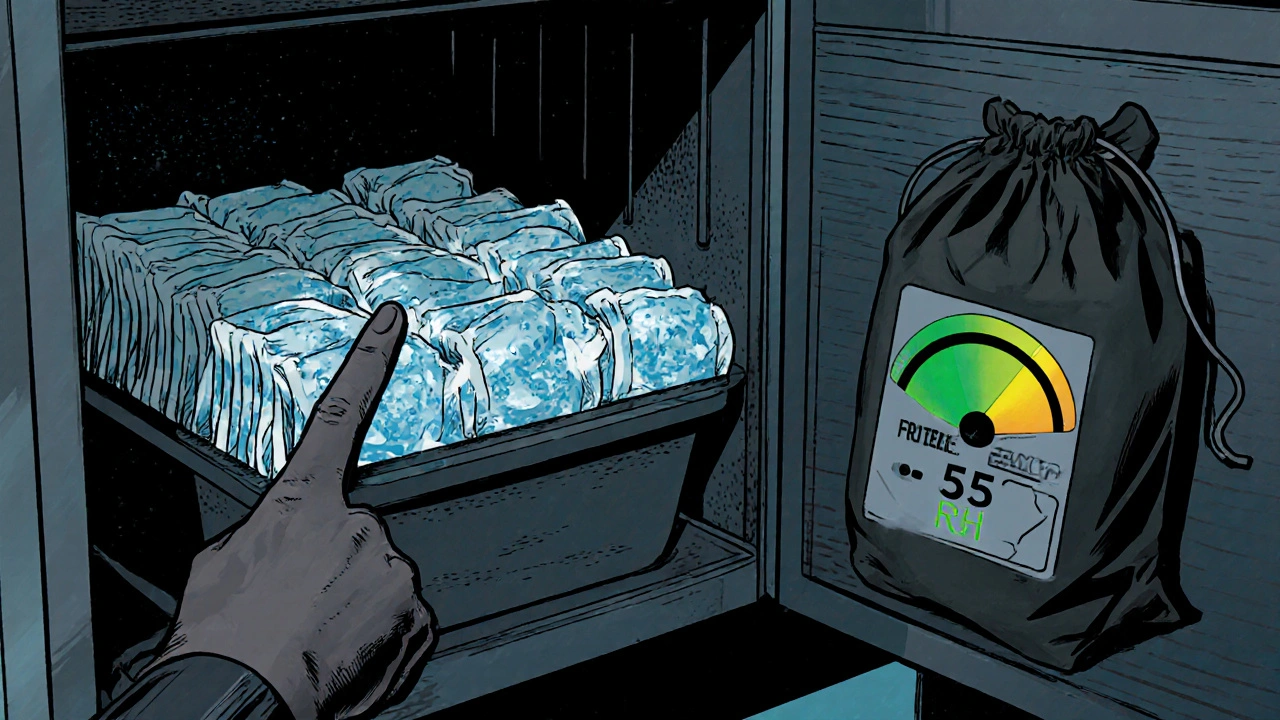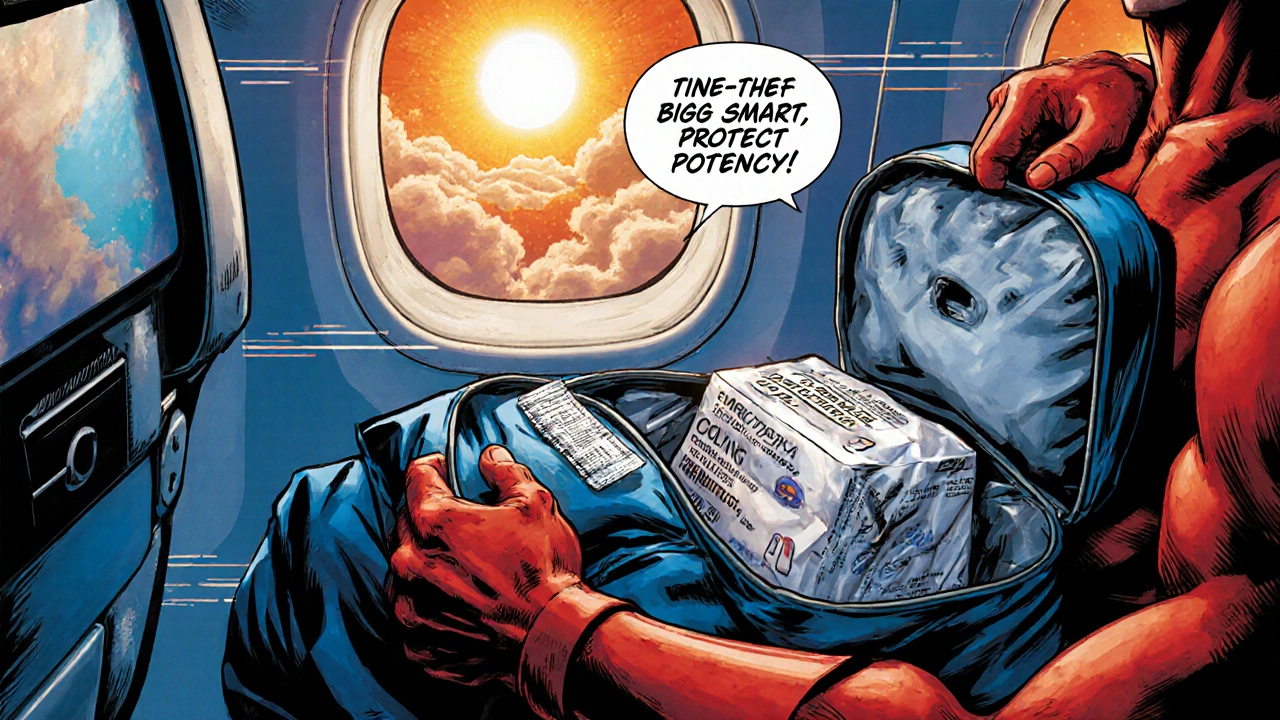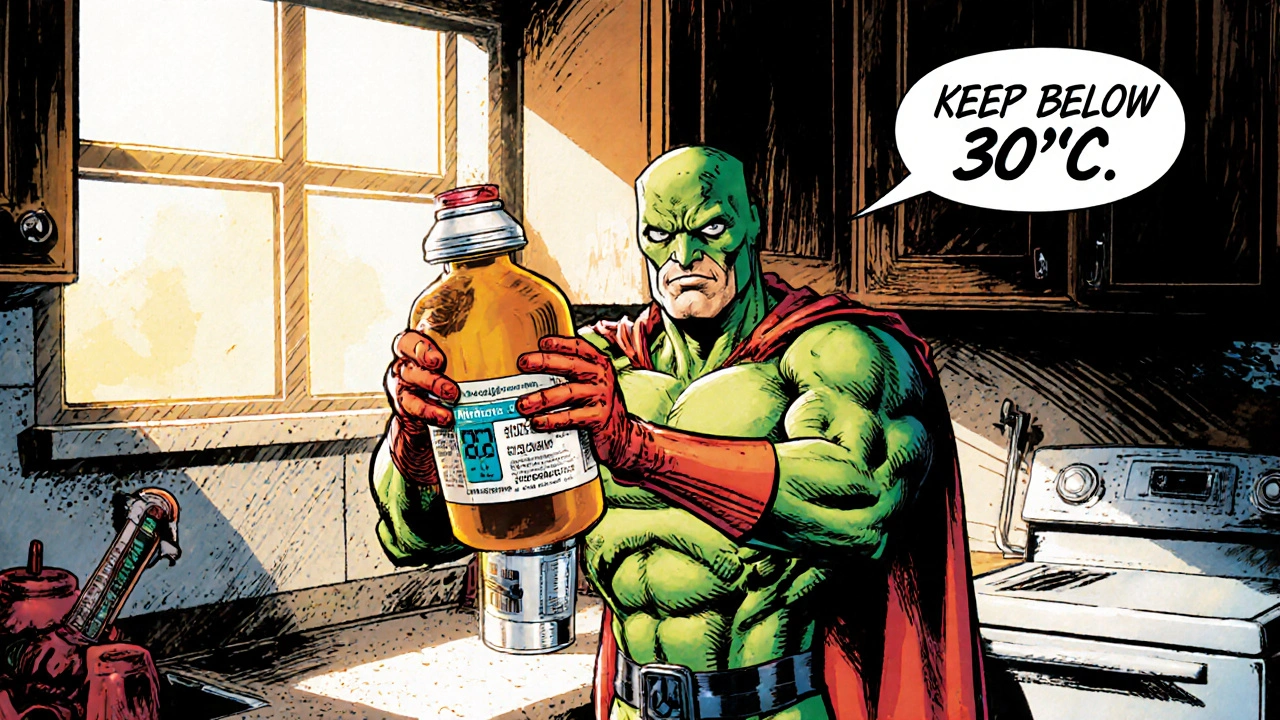Emtricitabine Storage Checker
Check Your Storage Conditions
Enter your current storage conditions to verify if they meet recommended guidelines for Emtricitabine stability.
When it comes to keeping your HIV medication effective, Emtricitabine is a nucleoside reverse transcriptase inhibitor (NRTI) that forms a key part of many antiretroviral regimens. Getting your Emtricitabine storage right is crucial for maintaining potency, preventing resistance, and staying healthy.
Why storage matters for Emtricitabine
Emtricitabine is a chemically stable compound, but it still reacts to extreme heat, moisture, and light. A study by the CDC in 2023 showed that tablets exposed to temperatures above 30°C for more than a week lost up to 12% of their active ingredient. That loss can translate into a higher viral load and a greater chance of drug‑resistant HIV strains.
In short, improper handling isn’t just about a wasted pill-it can affect your whole treatment plan.
Basic temperature guidelines
Most manufacturers label Emtricitabine tablets with a storage range of 20‑25°C (68‑77°F). Keep them away from:
- Direct sunlight or window benches.
- Radiators, heating vents, or kitchen ovens.
- Freezers or car trunks during summer trips.
If you live in a climate where indoor temperatures regularly exceed 25°C, consider using a small insulated pouch with a temperature‑monitoring sticker. These stickers change color if the internal temperature climbs above the safe range.
Humidity control
High humidity can cause tablets to soften, stick together, or even dissolve slightly. Aim for a relative humidity (RH) below 60%. Here are practical steps:
- Store the bottle in a dry cabinet or a resealable plastic bag with a silica‑gel packet.
- Check the packet monthly - replace if it feels warm or looks clumped.
- Avoid bathroom shelves where steam is common.
For patients on multiple antiretrovirals, keeping all pills in the same low‑humidity environment simplifies adherence.
Light exposure
While Emtricitabine isn’t extremely light‑sensitive, prolonged UV exposure can degrade the coating, making tablets more brittle. Store the original bottle in a dark cabinet, or transfer pills into an opaque, screw‑top container if you need to keep them on a bedside table.
Special considerations for combination pills
Many patients take Emtricitabine as part of Truvada (Emtricitabine+Tenofovir disoproxil fumarate) or Descovy (Emtricitabine+Tenofovir alafenamide). The storage rules are identical for the combo tablets, but remember:
- Never split or crush the tablets-this can expose more surface area to moisture.
- If a pill breaks, discard the whole tablet; the split portion may have absorbed moisture.
The same temperature and humidity limits apply, and the manufacturer’s label will often note a slightly tighter humidity range (below 50% RH) for these fixed‑dose combos.

Travel tips
Going on a road trip or an international flight? Follow these simple steps:
- Pack the medication in your carry‑on, not checked luggage. Cargo holds can experience temperature swings from -10°C to 40°C.
- Use a small insulated lunch bag with a cooling gel pack-remove the pack before taking the pill.
- If you’re traveling to a hot country, ask your pharmacy for a “heat‑stable” blister pack. Some compounding pharmacies offer foil‑lined packs that add another barrier.
Upon arrival, let the medication acclimate to room temperature for at least 30 minutes before opening the blister.
What to do if storage conditions are compromised
If you suspect your Emtricitabine has been exposed to heat or moisture, don’t automatically toss it. Check the tablet’s appearance:
- Discoloration (yellowing, brown spots) - discard. \n
- Cracking or powdery surface - discard.
- Only minor surface dust - you can still use it, but contact your pharmacist for confirmation.
When in doubt, call your pharmacy. Most pharmacies will replace a bottle that’s been stored incorrectly if you can provide a receipt and explain the situation.
Pharmacy‑level storage
Pharmacies follow stricter guidelines than home storage. According to CDC recommendations, bulk stock of Emtricitabine must be kept at 15‑30°C with humidity control and monitored daily. This ensures every dispensed bottle meets label specifications.
Ask your pharmacist whether their storage area is climate‑controlled; reputable chain pharmacies usually are, while smaller independent stores might rely on ambient conditions.
Checklist: Emtricitabine storage sanity check
| Item | Ideal Condition | What to Watch For |
|---|---|---|
| Temperature | 20‑25°C (68‑77°F) | Thermometer reading >30°C, hot car trunk |
| Humidity | <60% RH (ideal <50% for combos) | Moisture condensation, clumped silica packets |
| Light | Dark, opaque container | Fading or brittle edges |
| Packaging integrity | Seal intact, no tears | Broken blister, missing cap |

Common myths busted
Myth: “If I keep the pills in the fridge, they’ll stay good longer.”
Fact: Refrigeration can cause condensation when the bottle returns to room temperature, which actually raises humidity around the tablet. The label never recommends refrigeration unless explicitly stated for a specific formulation.
Myth: “I can keep them in a bathroom cabinet because it’s convenient.”
Fact: Bathroom humidity often exceeds 70% after showers, which is well beyond the safe range.
When to talk to your healthcare provider
Ask your doctor or nurse if you notice any of these signs:
- Frequent missed doses because you’re constantly moving the medication.
- Unexplained side effects that appear after a storage incident.
- Lab results showing a rising viral load despite perfect adherence.
They may adjust your regimen, suggest a different formulation, or provide a new storage kit.
Bottom line
Good storage isn’t a luxury-it’s part of your treatment plan. By keeping Emtricitabine at the right temperature, low humidity, and out of direct light, you protect its potency and help your body stay viral‑suppressed. Use the checklist above, keep an eye on travel conditions, and always reach out to your pharmacist if something looks off.
Frequently Asked Questions
Can I store Emtricitabine in a kitchen pantry?
A pantry is fine as long as it stays below 25°C and away from the stove or dishwasher steam. Avoid high‑humidity spots like under the sink.
What should I do if my medication was left in a hot car?
Let the bottle cool to room temperature, then inspect the tablets for discoloration or crumbling. Contact your pharmacy; many will replace the batch if the exposure was significant.
Do I need a special container for Emtricitabine?
The original bottle is designed to protect the pills. If you need a portable option, use an opaque, airtight pill organizer that keeps moisture out.
Is it safe to combine Emtricitabine with other meds in the same drawer?
Yes, as long as the other meds don’t require drastically different temperature or humidity conditions. Keep the drawer cool and dry.
How often should I replace my Emtricitabine bottle?
Don’t wait for the expiry date. If a bottle is more than two years old, or if you’ve experienced any storage mishap, ask your pharmacist for a fresh supply.


Comments
Frank Diaz
October 16, 2025 AT 19:00We often treat pills like mere objects, forgetting they're the thin line between health and chaos. Storing Emtricitabine in a hot kitchen is a silent betrayal of your own body. The universe demands discipline; neglecting temperature is an invitation to resistance. Consider this a moral imperative, not a convenience.
Kate Marr
October 22, 2025 AT 12:36🇺🇸 Our pharmacies should set the standard, not some DIY backyard experiment. If you can't keep a bottle out of a sauna‑like car, you aren't fit to claim American resilience. 📦💪 Keep it cool, keep it proud.
James Falcone
October 28, 2025 AT 05:12Man, if your car's hotter than a grill, just don't leave the meds there. Simple as that.
Darryl Gates
November 2, 2025 AT 22:48Great point about using a silica‑gel packet. For anyone juggling multiple meds, I recommend a single dry box with a small hygrometer-keeps humidity visible and manageable. Stay consistent, and your regimen stays strong.
Miriam Rahel
November 8, 2025 AT 16:24While the article aptly enumerates storage parameters, it neglects to address the pharmacokinetic implications of sub‑optimal conditions. A rigorous analysis would correlate temperature excursions with intracellular drug concentrations, thereby substantiating the clinical relevance of these recommendations.
lisa howard
November 14, 2025 AT 10:00Oh, the drama of a tiny tablet caught in the inferno of a forgotten bathroom cabinet! One can almost hear the silent screams of molecules as they break down, a tragedy worthy of a Shakespearean soliloquy. Yet, many of us are trapped in the endless choreography of work, kids, and relentless appointments, forgetting that the very foundation of our health rests on such mundane details. Let us not be the tragic heroes of our own story; arm yourselves with a simple insulated pouch, a temperature sticker that blushes when danger looms, and the resolve to treat each pill as a priceless artifact. This is not mere caution-it is the epic saga of survival.
Cindy Thomas
November 20, 2025 AT 03:36Honestly, the melodrama is overblown 😊. If a tablet loses a fraction of potency, the body compensates, and the viral load remains suppressed. I’ve seen patients thrive despite occasional heat exposure. So maybe we’re policing the pills too much.
Mary Davies
November 25, 2025 AT 21:12It's fascinating how a simple oversight like a hot car can ripple through a complex treatment plan, subtly shifting outcomes without anyone noticing.
Valerie Vanderghote
December 1, 2025 AT 14:48Listen, I get it-life is a whirlwind and the medicine bottle often ends up tossed on the nightstand, forgotten until the next dose. But imagine the pills as tiny guardians; when they sit in a damp bathroom, they start to weep, clumping together like strangers at a crowded party. That mess isn’t just aesthetic; it literally jeopardizes adherence because you might skip a crumbling tablet. So grab an airtight, opaque container, slap a label on it, and keep it where the humidity can’t reach. Your future self will thank you.
Michael Dalrymple
December 7, 2025 AT 08:24From a philosophical standpoint, the stewardship of your medication mirrors the stewardship of your health. By honoring the prescribed environmental parameters, you enact a quiet virtue that underpins therapeutic success. I commend those who adopt these measures with diligence.
Emily (Emma) Majerus
December 13, 2025 AT 02:00keep it dry n cool. thx.